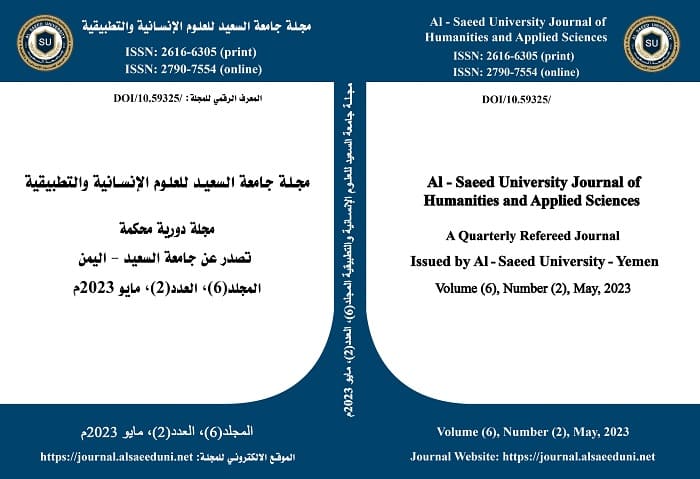The Reality of the Use of Active Learning Strategies by Faculty members at Abyan University in Teaching Arabic, from the Viewpoint of Students of the Faculty of Education, Zinjibar
DOI:
https://doi.org/10.59325/sjhas.v6i2.156Keywords:
active learning strategies, Arabic language, faculty members, Faculty of Education, Zinjibar, Abyan University.Abstract
This study aimed to identify the reality of the use of active learning strategies in teaching Arabic language by members at the Faculty of Education-Zinjibar, University of Abyan. A descriptive analytical approach was adopted in the study. The descriptive data were collected through the use of a questionnaire instrument. The population of the study included the students at the Department of Arabic Language, Faculty of Education- Zinjibar, University of Abyan. The study was applied to a sample of 63 male and female students. The study has included twelve strategies: discussion, questioning, problem solving, cooperative learning, concept mapping, project, summarizing, short discussion, brainstorming, think-pair-share strategy, appointments, and induction.
The study has reached several findings such as: the faculty members use active learning strategies in teaching Arabic language to a moderate degree, and that the most used strategies by the faculty members are discussion and questioning, and that the least used strategies are the small discussion strategies and the think-pair-share strategy. The study presents some recommendations, including: that Faculty of Education-Zinjibar at Abyan University must provide opportunities for training on the use of the largest number of active learning strategies at home and abroad, and the concerned authorities issue booklets and brochures for members in this faculty that contribute to increasing their experience in active learning.
Downloads
Published
How to Cite
Issue
Section
License
copyright is retained by the authors. Articles are licensed under an open access Creative Commons CC BY 4.0 license, meaning that anyone may download and read the paper for free. In addition, the article may be reused and quoted provided that the original published version is cited. These conditions allow for maximum use and exposure of the work.



